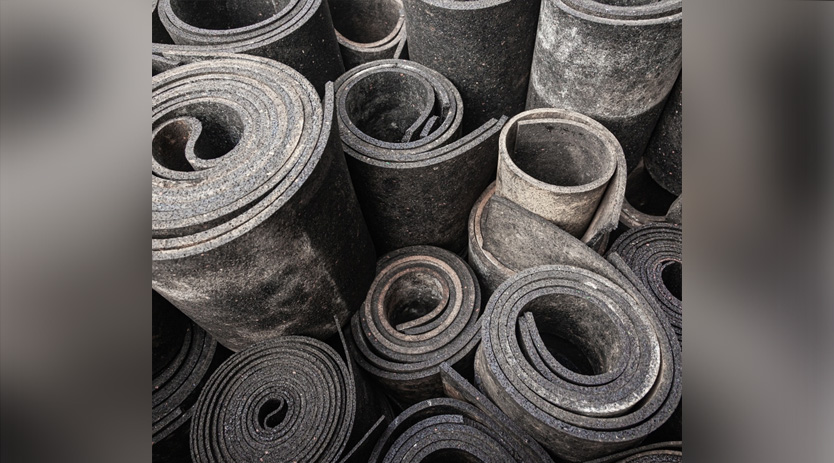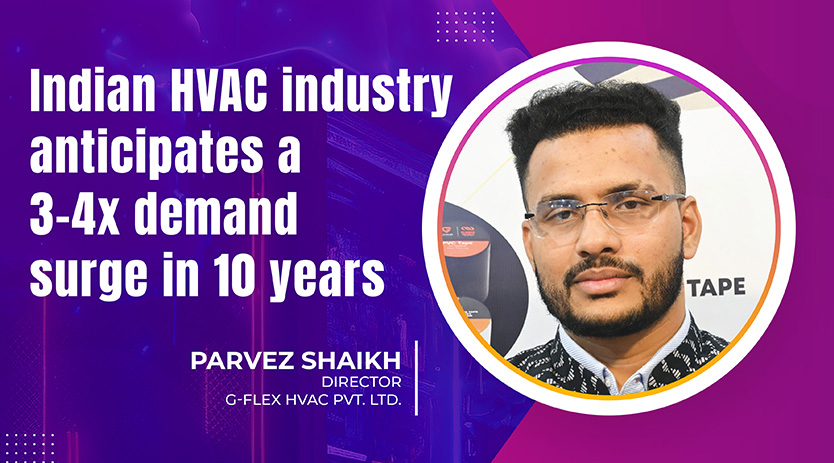Parvez Shaikh, from G-Flex, talks about business standards, insulation technology advancements, environmental standards, and the future of India’s HVAC industry.
How is the Rubber World Industry Company expanding its operations and market reach in Southeast Asia?
The Rubber World Industry Company began operations in 1993 and is based in Dubai. We specialise in producing elastomeric rubber insulation and have significantly expanded operations with Ajman and Sri Lanka factories. The company aims to serve customers in Southeast Asia, including the Philippines, Bangladesh, and Africa, from their Sri Lankan factory. We are also working to make our products more accessible in India. The priority is customer satisfaction by using our G-Flex subsidiary to import products directly to the customer’s doorstep.
What are the primary products that your company focuses on?
Our head office manufactures a wide range of products, with different items available. When it comes to importing products into India from our Sri Lankan factory, we focus primarily on two major products: nitrile rubber insulation and tubes/ sheets. India is a significant market for these products, with many customers in coastal cities with humid climates. Despite facing competition from other companies within India, our products stand out due to their competitive pricing, high quality, and efficient delivery methods.
Can you provide an overview of your company’s manufacturing facilities and production capacity?
We have three manufacturing facilities under our company’s umbrella: Rubber World Industry in Dubai, United Air Conditioning in Ajman, and our RWI INDUSTRIES PRIVATE LTD Sri Lankan factory. In Sri Lanka, our production capacity is around 750 boxes per day, while in Dubai, we manufacture approximately 1000 rolls and 800 boxes of NBR insulation. We currently serve 56% of the market and aim to increase our presence in SAARC countries and Africa, catering to around 30-35% of the regional market.
What steps have you taken to establish a strong market presence in India, and what innovative solutions are you exploring?
We have observed a high demand for our products in many coastal cities across India, particularly in the automotive and food-grade gasket industries. Our products have great potential in the HVAC field, and we have identified opportunities to supply OEMs in the automotive industry. These customers are located across various states in India and regularly purchase from us. To establish a strong market presence, we have developed short-term and medium-term strategies, which involve integrating existing networks and establishing channel partners.
Inflation is a problem affecting many countries, and building cold storage facilities could be a potential solution. This would help reduce food waste and extend the shelf life of perishable goods such as apples, which can last up to two months when stored in a cold storage facility, unlike for a few days when kept in open space. By addressing the food imbalance in developing countries, we can provide a sustainable food supply and help alleviate hunger in these regions. Above listed is a single example of the judicious use of thermal insulation in the Cold storage industry, many such industries are popping up to explore the use of NBR products.
What is the market outlook for ducting insulation?
Our industry has observed that the ducting insulation field has been following traditional methods, where GI ducts with foster glue and various types of insulation are used. However, we have noticed a good demand for nitrile rubber insulation in the last decade. We anticipate a rise in demand for it along with the tubes and sheets in the coming years, particularly in 2023-2025, rise in temp due to global warming and the quench of humans to search for comfort space to work and dwell will have an upward trend in the HVAC field and hence the product Due to its exceptional thermal insulation properties. While there is competition from other insulation materials like XLPE, PU and EPDM, NBR still holds its monopoly in the market for ducting insulation.

Can you explain how your company innovates to improve their functionality and aesthetics?
Our company manufactures nitrile rubber insulation, which can become fire retardant when certain chemicals are added. We also have UV retardant products, and we use specific layers depending on the application. Although the base material remains the same, we change the layers to improve the product’s aesthetics and functionality. This is a form of sub-innovation, as we are building on an existing product rather than creating something entirely new.
What steps has your company taken to promote green energy and sustainability in your products?
We believe in promoting green energy and sustainability. It is essential to ensure that our products do not have any long-term negative impact on the environment for future generations. Hence, our products are free from VOC and CFC, making them safe for the ozone layer. We have obtained various certifications to support our commitment towards sustainability, one such effort is Singapore green building council SGBC.
How is your company preparing for the anticipated increase in demand for HVAC and refrigerated containers in the Indian industry from 2023 to 2033?
According to a report focusing specifically on the Indian industry from 2023 to 2033, the Indian HVAC industry expects a threefold or fourfold increase in demand, especially for cooling and building supply chain containers. Refrigerated containers are traversing worldwide, and these containers are not just for transporting food but also for medicines that need to be maintained at a specific temperature during transportation. Additionally, there is growing awareness about food waste, and people are looking for ways to store food for longer periods to promote sustainable consumption. As a company, we are preparing for these trends and opportunities. Apart from the above new trends the traditional market of split AC, VRF and commercial and industrial refrigeration still holds the lion’s share in the market.
Cookie Consent
We use cookies to personalize your experience. By continuing to visit this website you agree to our Terms & Conditions, Privacy Policy and Cookie Policy.












